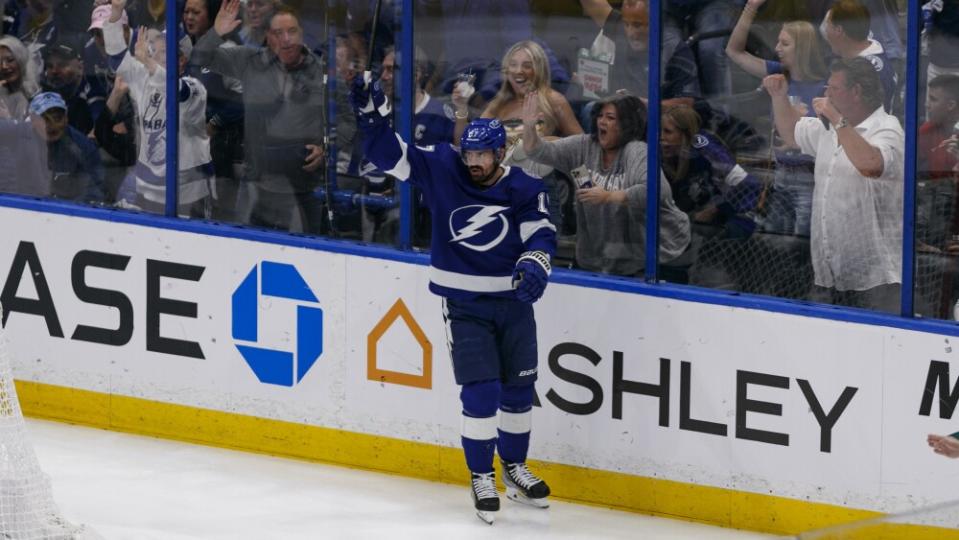
NASHVILLE, Tenn. — Bill Guerin didn’t need to be reminded of how thin the upcoming crop of NHL free agents is regarded, or how numerous teams have already maxed out their payroll because of a salary cap that’s remained relatively flat since the COVID-19 pandemic hit.
What the Minnesota Wild general manager preferred, in wrapping up the NHL draft in Music City on Thursday, is if someone reminded the prospective free agents – and especially their representatives – of that reality with the league’s signing period less than 48 hours away.
“That’d be a great message to send to the agents,” Guerin said. “Because they think the cap just went up to $10 million.”
With the cap increasing to $83.5 million for next season, a $1 million jump from last year and up from $79.5 million in 2018-19, Guerin’s comments represent a pre-emptive warning to those expecting the usual round of fireworks to begin when the league’s free agent signing period opens on Saturday.
The more significant headlines are expected to focus on teams re-signing their stars, with the Buffalo Sabers anticipated to lock up defenseman Rasmus Dahlin to a long-term deal, and the Columbus Blue Jackets expected to finally announce the hiring of Mike Babcock as their Coach.
Blue Jackets GM Jarmo Kekalainen declined to discuss Babcock’s status because his contract with Toronto doesn’t expire until Friday. Babcock has been out of the NHL since being fired by the Maple Leafs in November 2019.
As for free agency, Detroit Red Wings GM Steve Yzerman said he’ll make the usual inquiries, while acknowledging there’s “probably more needs than there are players at this point.”
The competitive teams – Boston, Tampa Bay, Colorado, Edmonton and defending Stanley Cup champion Vegas – are struggling to retain their own players.
The Bruins, coming off a season in which they set NHL single-season records for most wins (65) and points (135), have $10.9 million in cap space available with nine roster spots still to fill – and that’s after they unload Taylor Hall’s. $6 million cap hit by trading him to Chicago.
By comparison, many of the rebuilding teams with cap space available – Philadelphia, Chicago, Arizona and Anaheim – are more focused on keeping roster spots open to develop their youth rather than adding high-priced talent.
“We’re not looking for long-term contracts at this point, so don’t expect too much in a couple of days on that,” said Flyers general manager Danny Briere, who has spent the past month shedding veterans by trading defenseman Ivan. Provorov in a three-team deal to Columbus and Kevin Hayes to St. Louis.
In the meantime, this year’s free-agent class has talent, but lacks the high-profile players of past summers.
The group is headed by 34-year-old Patrick Kane, who will miss the start of the season after having hip resurfacing surgery. Kane’s former Blackhawks teammate Jonathan Toews is available, although he has combined for just 27 goals and 68 points over the past two years since missing the entire 2020-21 season due to chronic immune response syndrome.
Tampa Bay forward Alex Killorn, who put up career-best numbers with 27 goals, 37 assists and 64 points, will attract attention, although he’s 34, and the Lightning are still hoping to re-sign him. Dmitry Orlov is regarded as the free agent class’s top defenseman, while Frederik Andersen, Tristan Jerry and Antti Raanta are among the goalies expected to be available.
The flat cap has led to more teams going the trade route to acquire talent because the player’s salary is already established, as opposed to the uncertainty that comes with having to negotiate a contract in free agency, and the potential of other teams entering the mix and raising the price.
“Ultimately, I think people are looking at the free agency market and it’s kind of thin this year. So if they want to improve their team, they’re looking at the trade market,” Yzerman said. “You get some certainty if you make a trade, as opposed to going in there two days from now, and we have no idea who or what you’re getting and what it’s going to cost you.”